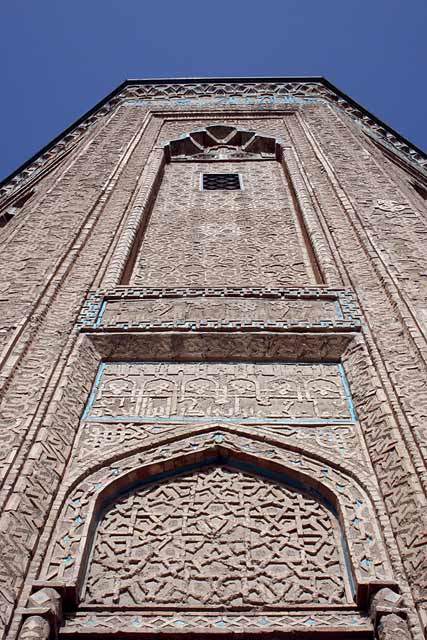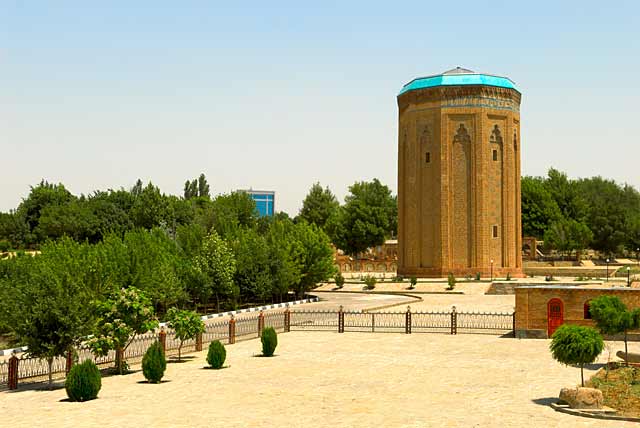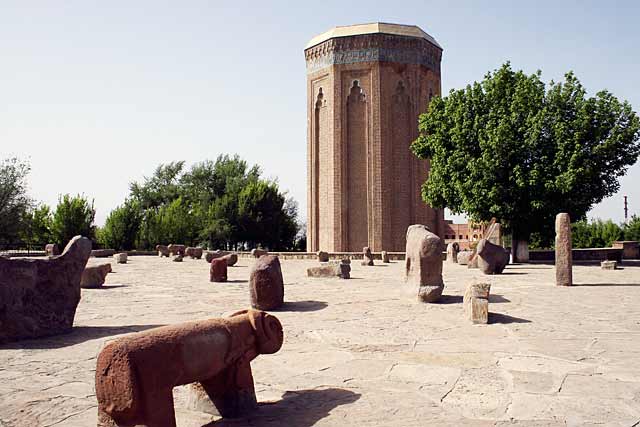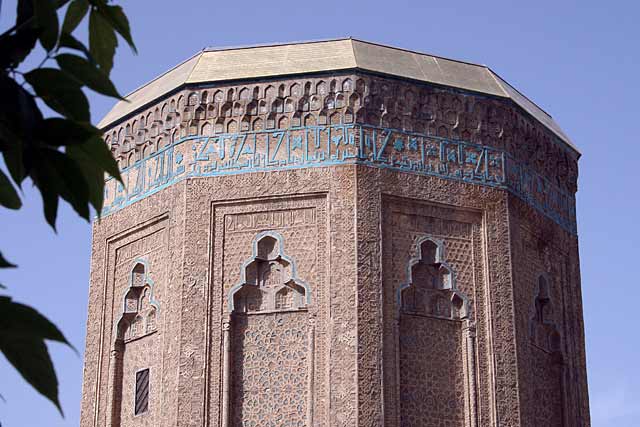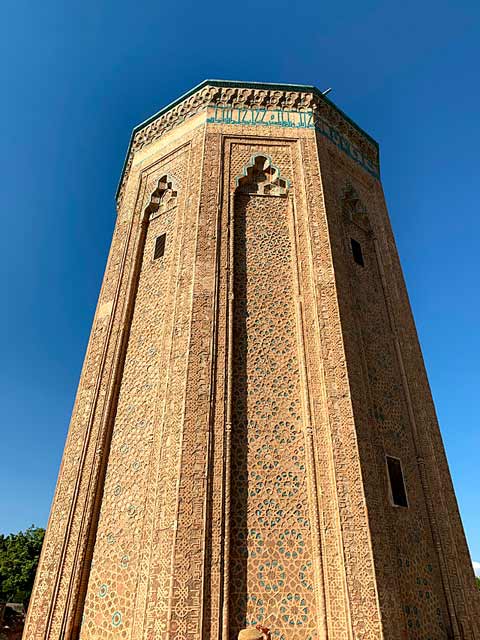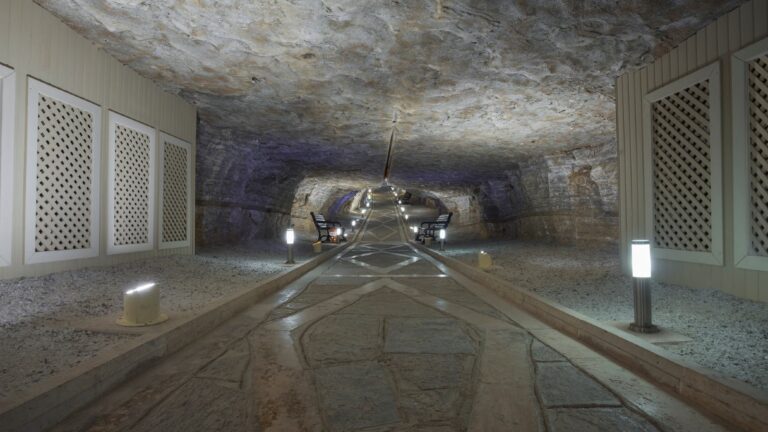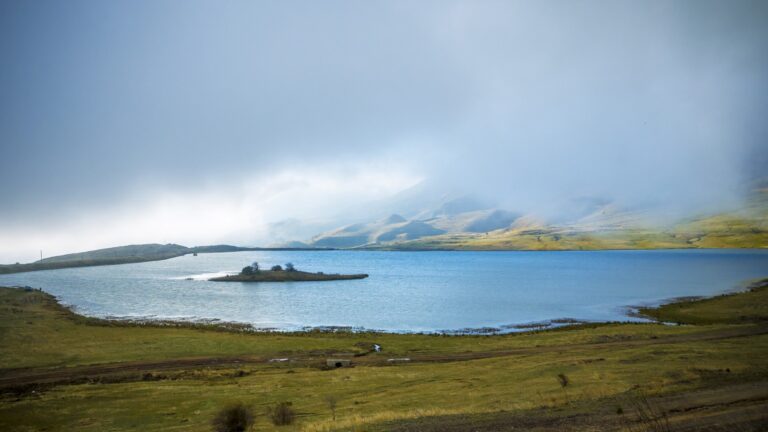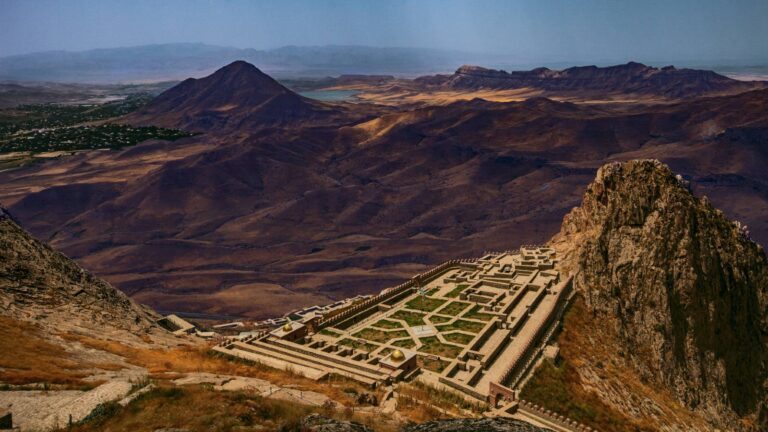Main image: Fuad2006, CC BY-SA 3.0, via Wikimedia Commons
Getting There
The mausoleum is located in a quiet park in the centre of Nakhchivan City near the Nakhchivan Khan’s Palace. Once in Nakhchivan City, you can easily walk, take a local bus or taxi.
What to Expect
Leaning a little like the Tower of Pisa, the Momine Khatun Mausoleum is a symbol of Nakhchivan as well as one of the finest monuments in Azerbaijan. Dating to 1186, it’s also one of the oldest monuments in the Islamic East built in honour of a woman. The ten-sided tower is adorned with geometric patterns and majolica tiles and has a small museum inside.
This wonderful 12th century time capsule stands amid a quiet park in the centre of Nakhchivan city, a stone’s throw from the Nakhchivan Khan’s Palace. It reaches 26m tall, leans a little to one side, and is decorated with geometric patterns and majolica-tiled Kufic script which reads “we leave, and only the wind is left. We shall die, but our memory remains”.
The broad stone paths leading up to it are nicely illuminated at night and provide great photo opportunities. Stepping inside the decagonal tower, there’s a simple exhibition featuring old photos and illustrations with brief explanations on the mausoleum’s history and the woman who inspired it – Momine Khatun, whose name means “Pious Lady”. However, you won’t find the original graves of her and her family, as they were long ago stolen.
History
The mausoleum was erected in 1186 in honour of Momine Khatun, the beloved wife of Shamsaddin Eldeniz. He was born a slave in the Seljuk Empire but after that imploded he rose to found a powerful state called the Eldiguzids. Lasting from 1136 to 1225 and covering much of today’s Azerbaijan, Armenia and northwestern Iran, this was a golden era in the history of Nakhchivan.
The mausoleum is believed to have been commissioned by Shamsaddin Eldeniz but completed following his death by his son Muhammed Jahan Pahlavan. All three family members were buried inside. Made from burnt bricks, the structure was designed by the celebrated local architect Ajami Nakhchivani and originally stood an impressive 34 metres tall.
Facilities Available
- Guided tours
- Museum
- Taxis nearby


